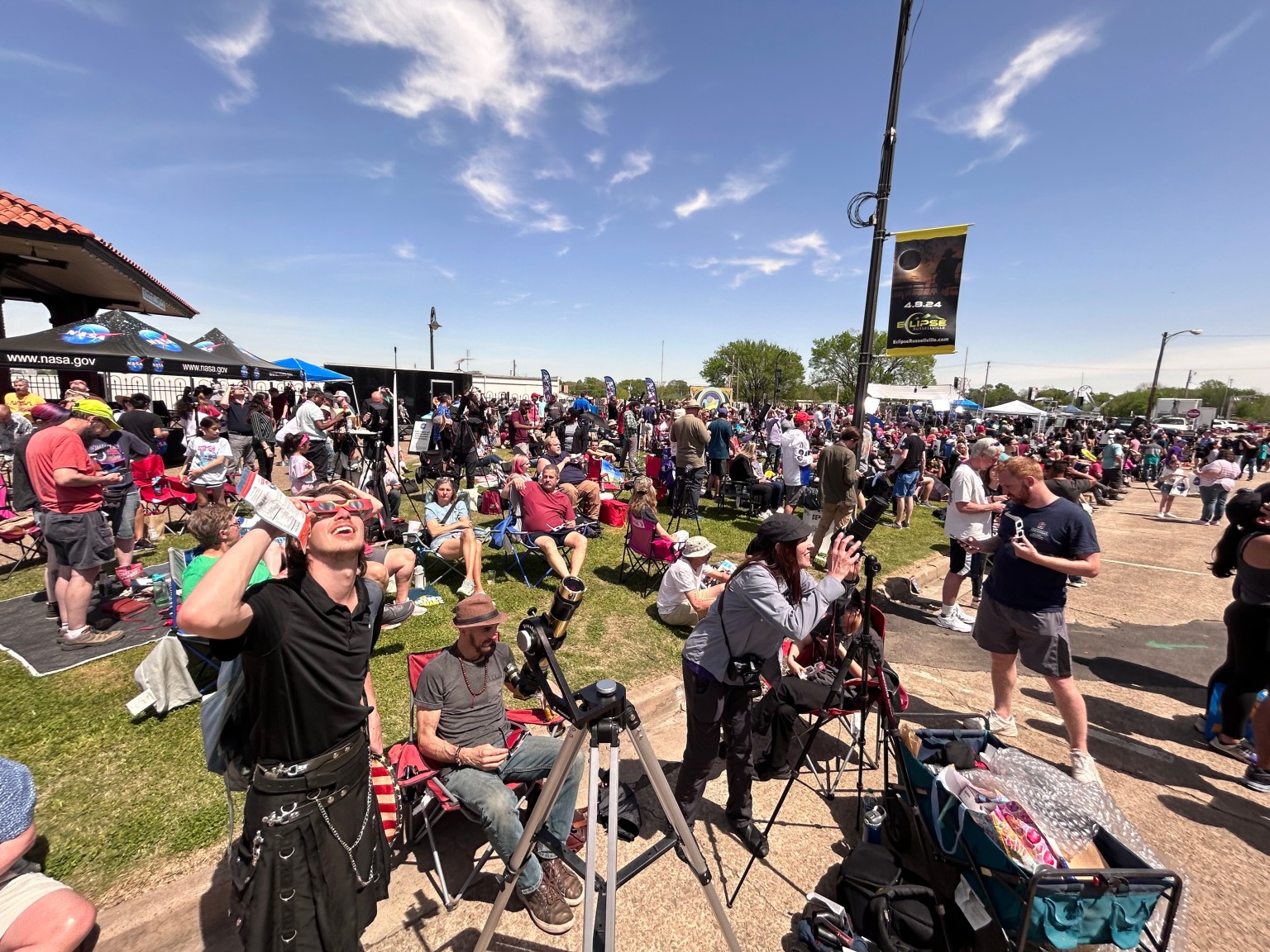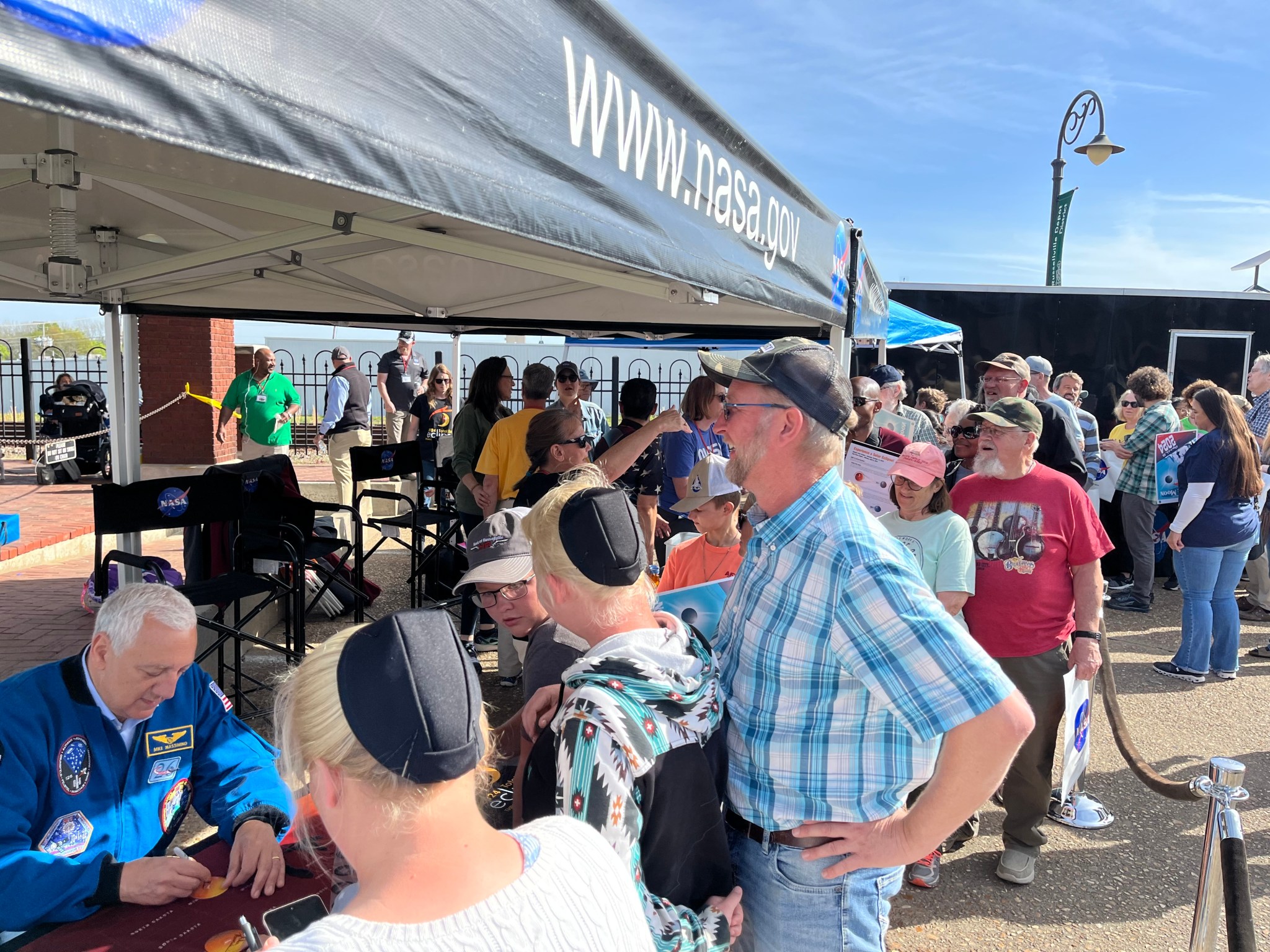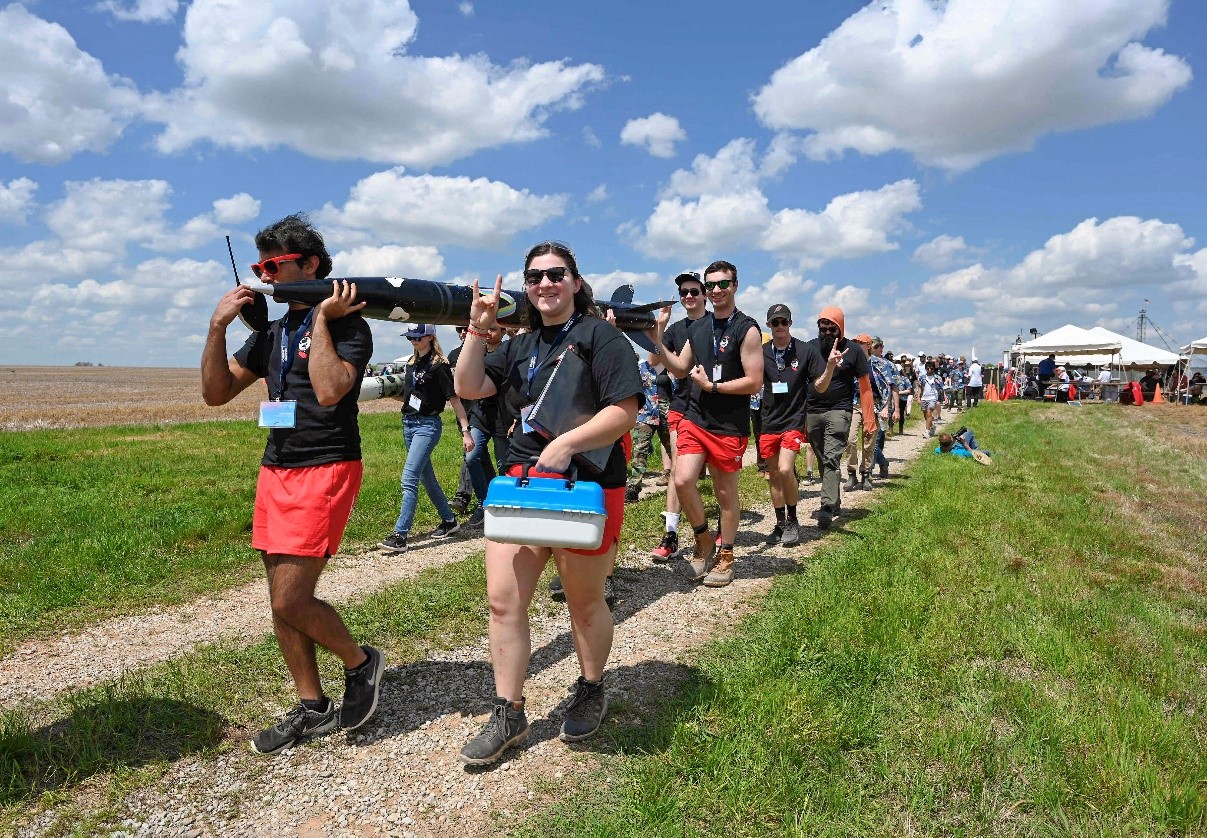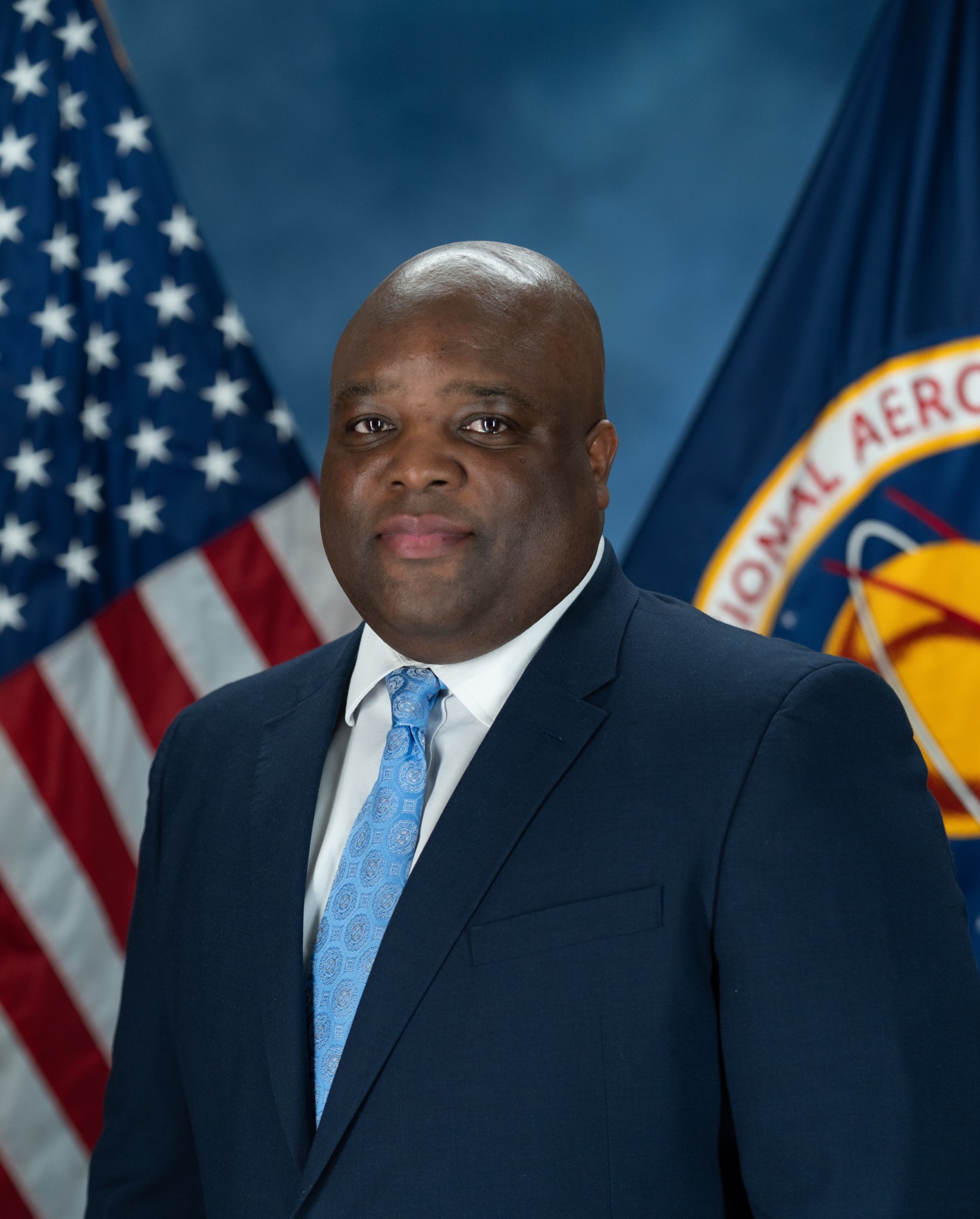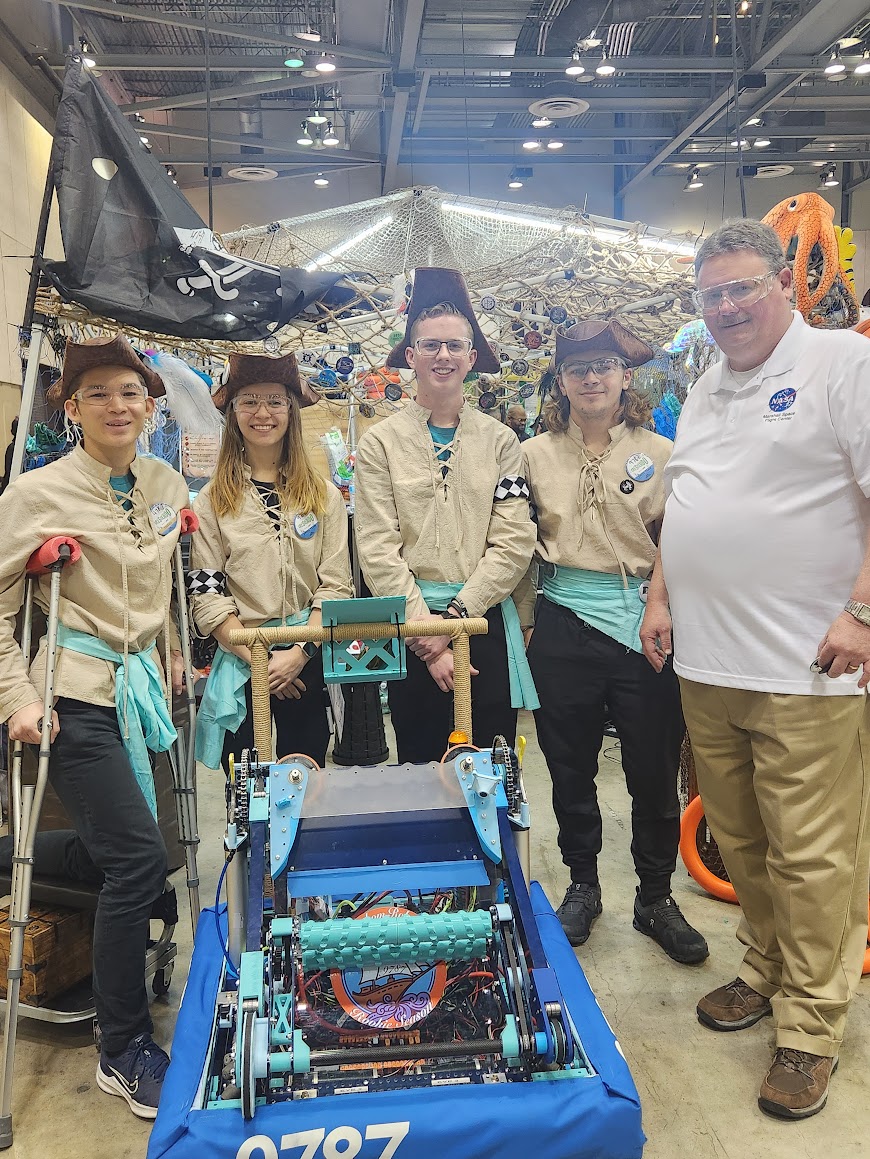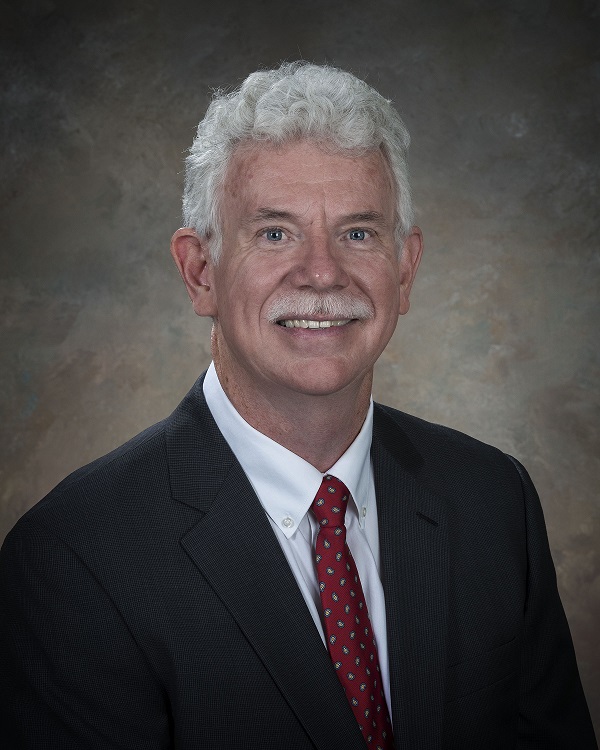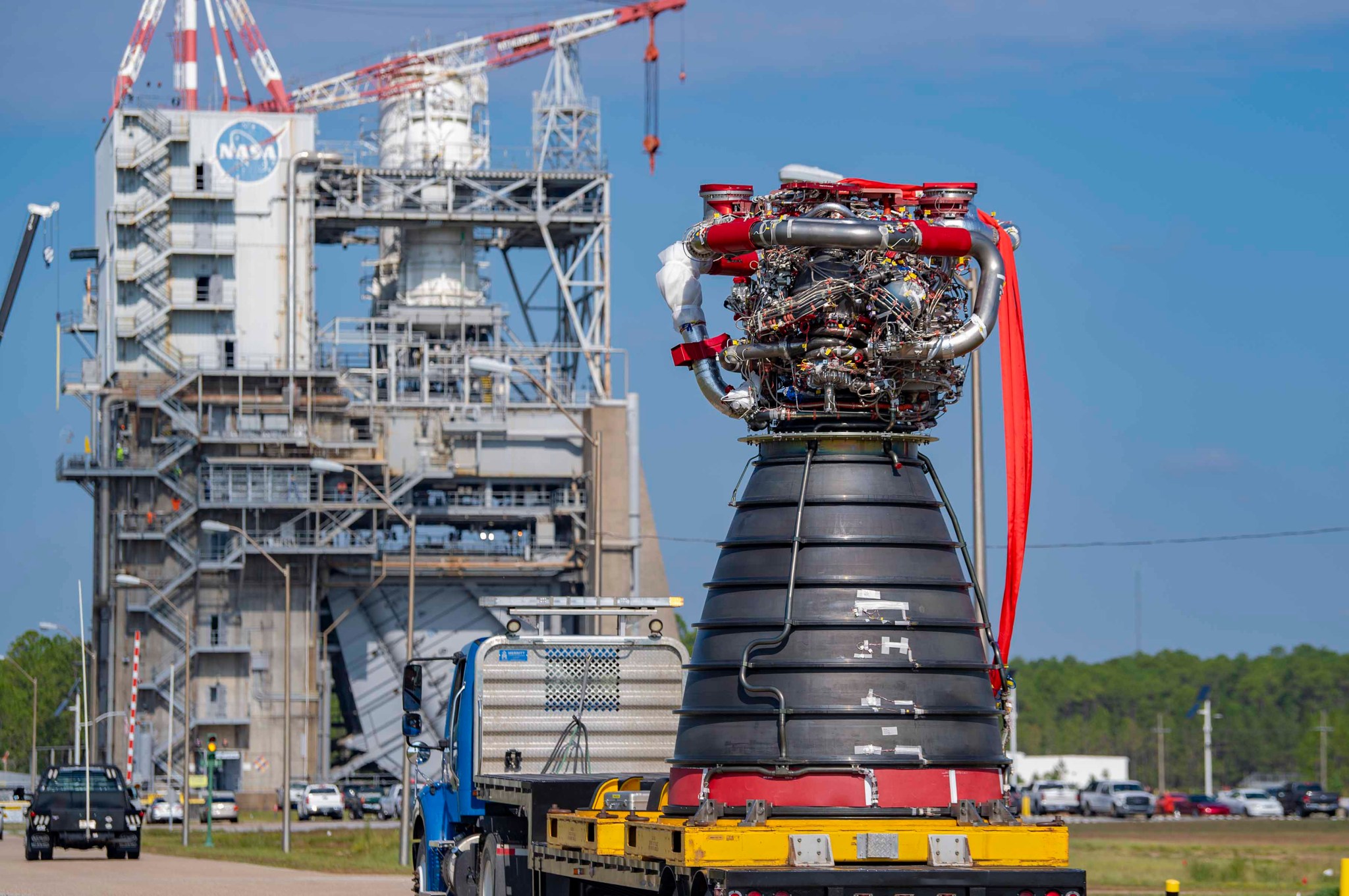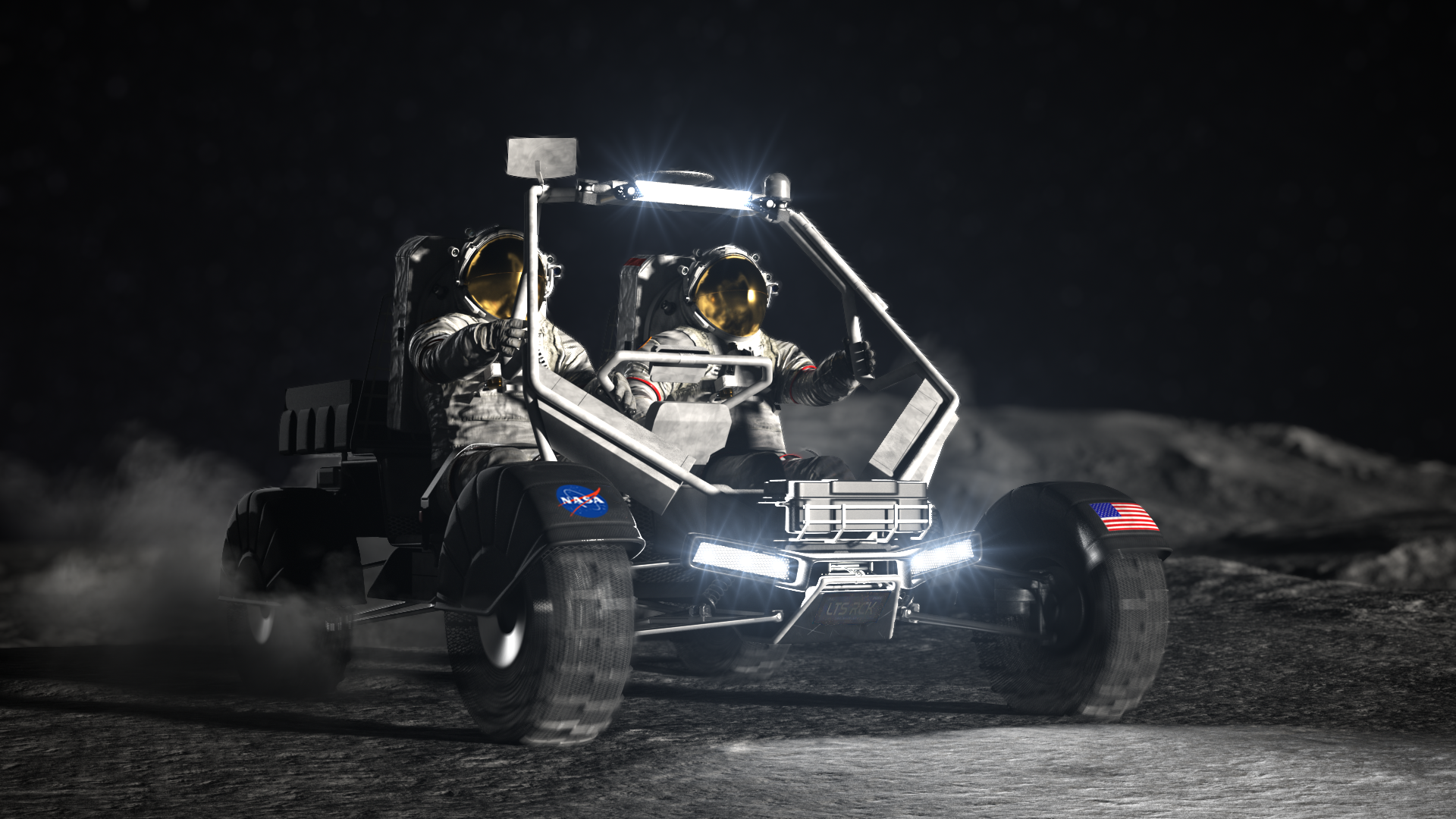NASA, Marshall Help Viewers Celebrate Total Solar Eclipse in Arkansas
A group of Marshall and agency team members traveled to Russellville, Arkansas, to help viewers experience the April 8 total solar eclipse through the eyes of NASA.
Science and communication experts from NASA’s Marshall Space Flight Center, Stennis Space Center, Kennedy Space Center, and NASA Headquarters provided educational outreach opportunities and participated in panel discussions in Russellville, which experienced an eclipse totality of 4 minutes, 12 seconds.
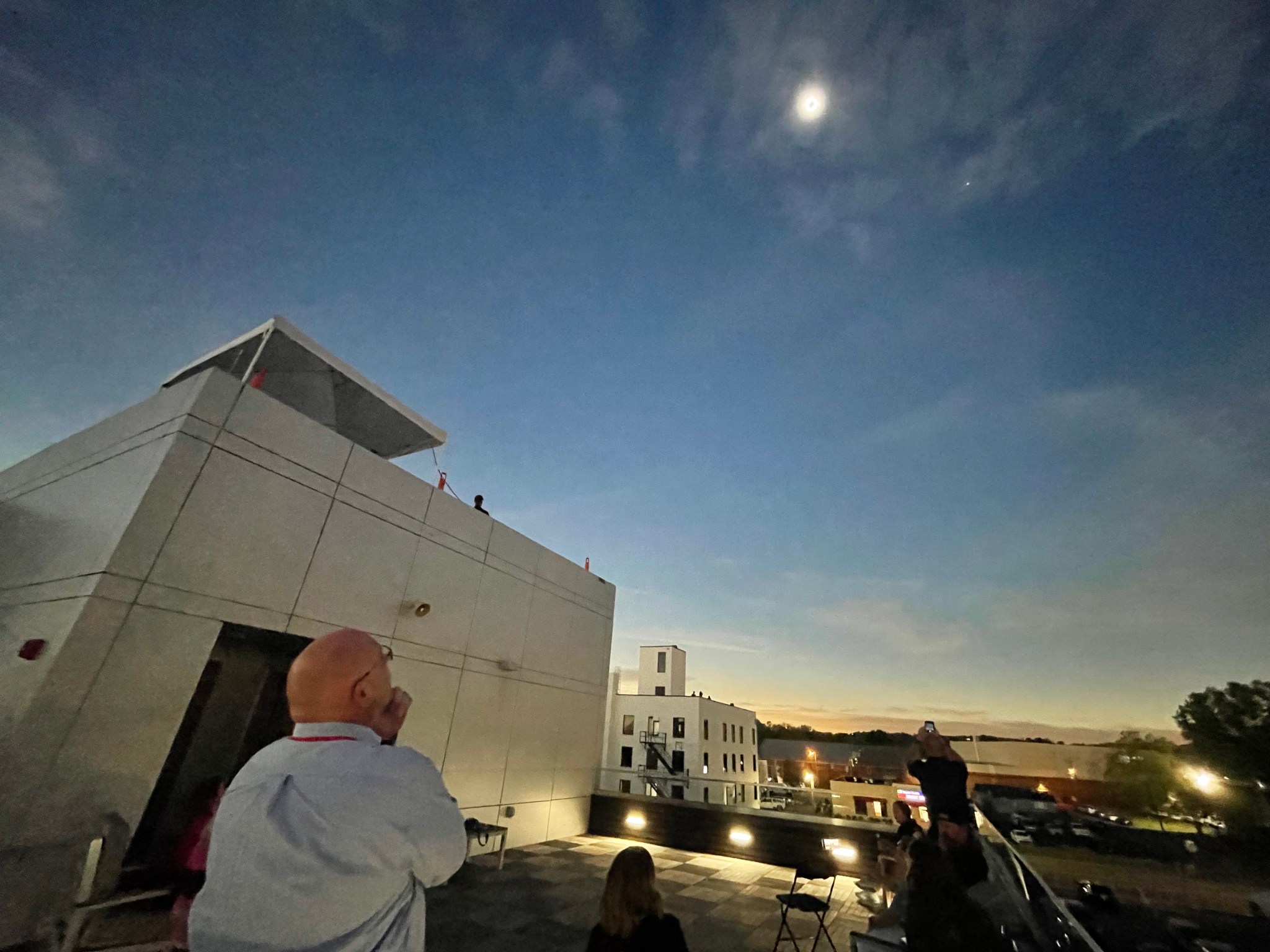
NASA was also joined by experts representing the Arkansas Air National Guard and the Paris Observatory in Muedon, France. More than 100,000 tourists were expected to visit Russellville for the rare experience. Marshall hosted part of the agency’s live television broadcast from the city and conducted several scientific presentations and public events for visitors.
More than 400 NASA employees at 14 locations across the U.S. engaged the public, from Texas to Maine. As of Tuesday afternoon, more than 13 million viewers had watched the broadcast. You can watch NASA’s broadcast coverage of the eclipse here.
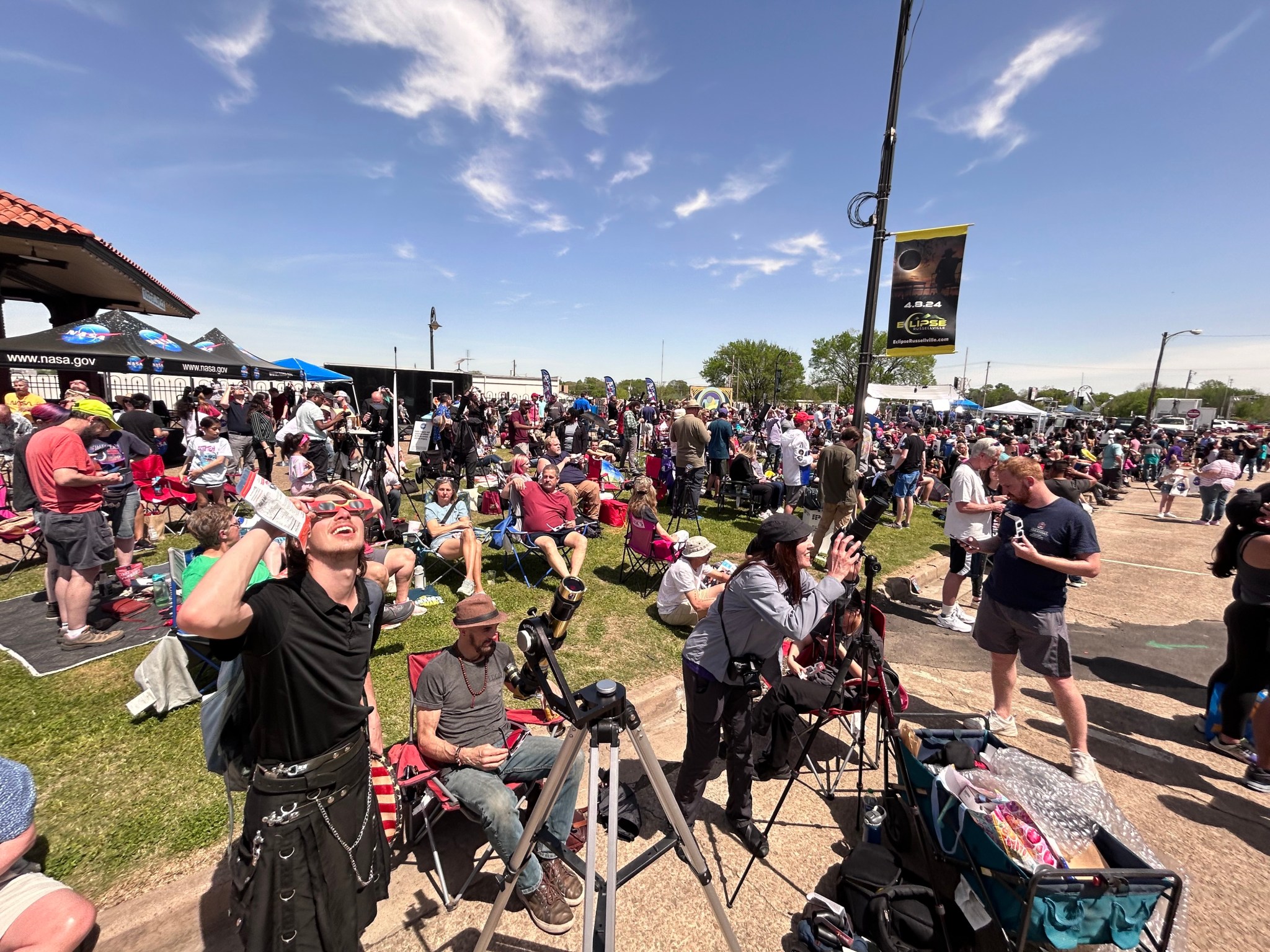
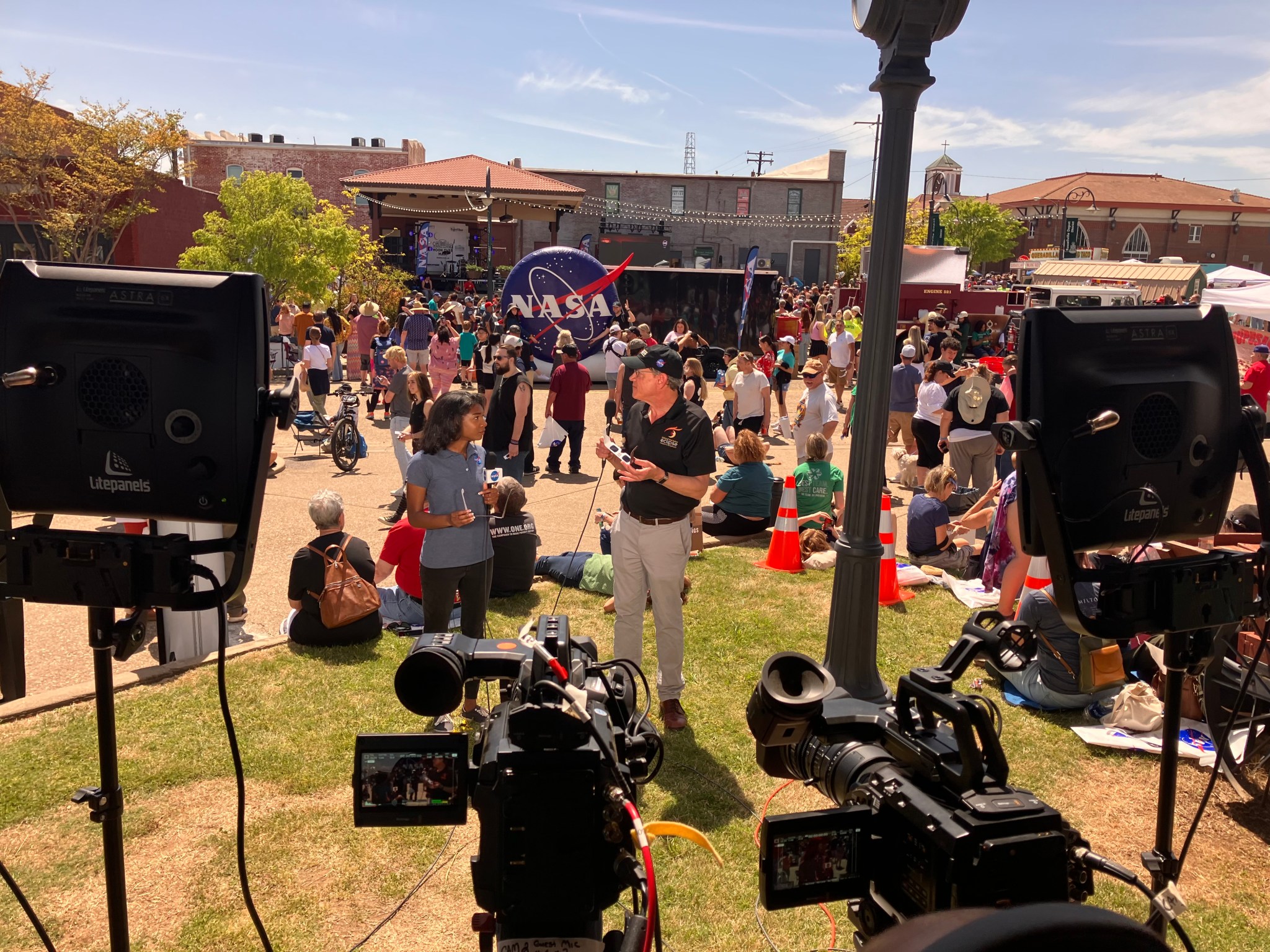
Student Launch Challenge Returns to Alabama April 13
NASA’s 2024 Student Launch challenge will bring students from colleges, universities, high schools, middle schools, and informal education groups to launch amateur rockets and payloads April 13, starting at 8:30 a.m. CDT at Bragg Farms in Toney, Alabama, near NASA’s Marshall Space Flight Center.
Live streaming will begin at 8:20 a.m. CDT on NASA Marshall YouTube and Student Launch Facebook.
Seventy teams from 24 states and Puerto Rico are participating this year with 53 teams expected to launch in-person. Any team not traveling to Alabama may conduct final test flights at a home launch field.
NASA also welcomes the return of the Rocket Fair on April 12 from 3-6 p.m. at the Von Braun Center East Hall in downtown Huntsville. This event is free and open to the public as students display their rockets and answer questions from the media and NASA engineers.
Schedule of Events
- April 12: Rocket Fair at the Von Braun Center East Hall.
- April 13: Launch Day, gates open at 7 a.m. The event runs from 8:30 a.m. to approximately 2:30 p.m. (or until the last rocket launch) at Bragg Farms. Lawn chairs are recommended. Pets are not permitted.
- April 14: Tentative rain day on Sunday in case of inclement weather on April 13 starting at 8:30 a.m. at Bragg Farms.
Winners of the student launch will be announced on June 7 during a virtual awards ceremony once all teams’ flight data has been verified.
Student Launch provides relevant, cost-effective research and development of rocket propulsion systems and reflects the goals of NASA’s Artemis campaign, which seeks to put the first woman and first person of color on the Moon.
Each year, the payload component changes to reflect current NASA missions. This year’s payload challenge is inspired by the Artemis missions.
Students will design a SAIL (STEMnaut Atmosphere Independent Lander) payload. It must deploy mid-air, safely return to the ground without using a parachute, and be reusable to launch the same day without repairs or modifications. The payload will contain a crew of STEMnauts, four non-living objects representing astronauts. Students will choose metrics to determine the endurance of the lander, considering acceptable descent and landing parameters.
Middle and high school teams can choose to attempt the lander payload or develop their own science or engineering experiment.
Eligible teams compete for prizes and awards and are scored in nearly a dozen categories including safety, vehicle design, social media presence, and science, technology, engineering, and math (STEM) engagement. Teams can also win the Altitude Award in each division based on how close they get to the altitude they projected their rockets would reach months in advance to launch day.
Marshall’s Office of STEM Engagement hosts Student Launch to encourage students to pursue careers in STEM through real-world experiences. Student Launch is a part of the agency’s Artemis Student Challenges – a variety of activities exposing students to the knowledge and technology required to achieve the goals of the Artemis missions.
In addition to the NASA Office of STEM Engagement’s Next Gen STEM project, NASA Space Operations Mission Directorate, Northrup Grumman, National Space Club Huntsville, American Institute of Aeronautics and Astronautics, National Association of Rocketry, Relativity Space and Bastion Technologies provide funding and leadership for the competition.
Hansel Gill Named Director at Michoud Assembly Facility
Hansel Gill has been named as director at NASA’s Michoud Assembly Facility, which is managed by the agency’s Marshall Space Flight Center.
Gill has been Michoud’s acting director since December after previously being the facility’s deputy director from 2021 to 2023. He will be responsible for managing the day-to-day operations of one of the world’s largest manufacturing facilities, where key elements of NASA’s SLS (Space Launch System), and Orion spacecraft are built. Michoud, a multi-tenant manufacturing site sitting on 829 acres with over 2 million square feet of manufacturing space, also provides facility infrastructure and capacity for federal, state, academic, and technology-based industry partners.
From 2016 to 2021, Gill served as subsystem manager for production in the SLS Stages Element Office, and later within the Block 1B/EUS (exploration upper stage) Development Office, providing technical leadership for SLS core stage production supporting Artemis I and early development and production planning for the exploration upper stage initiating flight hardware production operations and facility readiness at Michoud.
Gill served as team lead and acting assistant branch chief for the Metals Joining and Processes Branch in Marshall’s Engineering Directorate from 2013 to 2016. He was responsible for materials characterization and process development, product management, and corrosion engineering, supporting advanced exploration and manufacturing capability advancements. While in this position, Gill led the production for the EFT-1 multi-purpose crew vehicle stage adaptor (MSA) providing the structural interface for Orion and the Delta IV launch system supporting the EFT-1 Orion Flight Test.
He joined NASA as a student intern in 1990 and was hired full time in 1996 as materials engineer in Marshall’s Engineering Directorate.
Gill’s awards include Safety Flight Awareness Award – Group Achievement; NASA Honor Award – Exceptional Achievement Medal; Director’s Commendation Honor Award; Materials & Processes Laboratory Peer Award; Systems Engineering Process Management Tiger Team Group Achievement; Black Engineer of the Year Award – Modern Day Technology Leader (24th STEM Global Competitiveness Conference); Director’s Commendation – Carbon Nanotube Technology; and a NASA Group Achievement (Safety Excellence) Award.
He received a bachelor’s degree in mathematics from Oakwood University in Huntsville before earning his master’s in industrial and systems engineering from the University of Alabama in Huntsville.
A Huntsville native, Gill and his wife of 27 years, Arnissa, reside in Huntsville. They have an adult daughter, Addison.
FIRST Robotics Rocket City Regional Returns
More than 1,000 high school students on 47 teams from 10 states and four countries competed in a robotics game called “CRESCENDO” during the 2024 FIRST Robotics Rocket City Regional Tournament.
The event was April 5-6 in Huntsville near NASA’s Marshall Space Flight Center, which supported the regional tournament along with NASA’s Office of STEM Engagement.
FIRST Robotics is a global robotics competition for students in grades 9-12. The competition challenges teams to raise funds, design a team brand, hone teamwork skills, and build and program industrial-sized robots to play a difficult field game against competitors.
District and regional competitions – such as the Rocket City Regional – are held across the country during March and April, providing teams a chance to qualify for the 2024 FIRST Robotics Competition Championship events held in late April in Houston.
NASA and its Robotics Alliance Project provide grants for high school teams and support for FIRST Robotics competitions to address the critical national shortage of students pursuing STEM (Science, Technology, Engineering, and Mathematics) careers.
Michoud Site Recovery Team Receives NASA’s Silver Group Achievement Award
By Heather Keller
The High Voltage Hurricane Ida Site Recovery Team at NASA’s Michoud Assembly Facility was awarded the agency’s Silver Group Achievement Award on March 18. The team of seven was recognized for “exemplary employee dedication and perseverance ensuring the safety of site, SLS (Space Launch System) hardware, and personnel” onsite post landfall of the category 4 storm.
Hurricane Ida made landfall in southeast Louisiana on Aug. 29, 2021, causing catastrophic failure of high voltage infrastructure and leaving most of the city of New Orleans without power for several weeks. Michoud received major damage from the storm’s 112 mph wind gusts and sustained winds of 80 mph. Immediately after landfall, the Michoud High Voltage Team methodically and safely energized the 6 MW emergency generator while procedurally transferring power to the facility’s east and west master substations. The transfer provided critical power to the rocket factory’s final assembly area while coordinating with the SLS Program and Boeing.
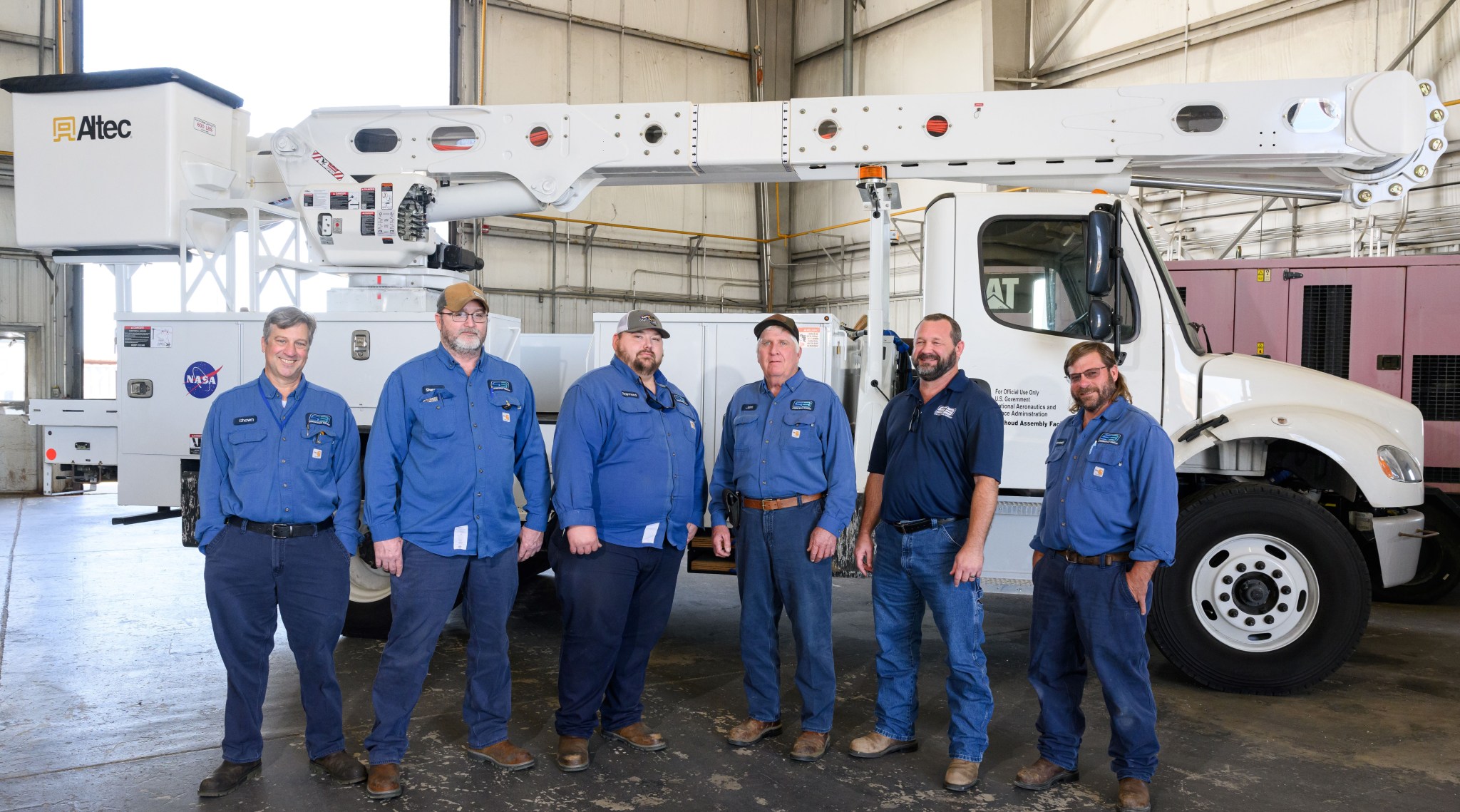
The critical transfer also provided essential power for SLS purges for Engine Section and Clean Work Areas to ensure the safety of flight hardware components. The team also provided power for lighting, allowing the Boeing teams to conduct critical inspections of flight hardware for damages.
The team also set up and provided emergency generator power for critical site infrastructure, such as the Coast Guard Exchange (CGX), which provided fuel for response and recovery personnel and other necessary supplies.
The High Voltage Team collaborated with Entergy New Orleans to determine a timeline for Michoud to accept line voltage from the site’s generating station and was successful in accepting power five days post-landfall. They systematically worked to safely bring additional loads online as prioritized and requested by Boeing and the SLS Program with more than 35 buildings receiving power approximately eight days post hurricane and allow site opening for tenant access.
Keller, a Manufacturing Technical Solutions Inc. employee, works in communications at Michoud Assembly Facility.
Dr. Sterry: Be Aware of Increase in Alcohol Abuse Rates Post COVID
Dear Marshall family,
April is Alcohol Awareness Month, and recent data indicate the rates of alcohol abuse and deaths resulting from it have risen dramatically over the past few years.
Very early during the COVID-19 pandemic it became apparent that sales of alcohol were increasing, and so it has been expected that the negative impacts related to this issue would increase as well. But I don’t think anyone anticipated just how much they would increase. I understand your first inclination might be to skip over this, but it’s a quick read, so please take a moment to consider the situation for the sake of your family, friends, and co-workers.
Data from 2020–2021, published by the Centers for Disease Control and Prevention, indicate that 178,000 people died in the U.S. from alcohol abuse and related health problems during that period. This represents a 29% increase from 2016–2017, when there were an estimated 138,000 deaths. Similarly disturbing, data published by the National Institute on Alcohol Abuse and Alcoholism indicate that rates of alcohol use disorder rose from 14.5 million adults in the U.S. in 2019 to 29.5 million in 2022.
Since a majority of adults in the U.S. drink alcoholic beverages on occasion, it is becoming even more important to be mindful of how to reduce the risks of negative impacts on our health, and on our lives, in general. The U.S. Department of Agriculture offers guidelines for alcohol consumption geared toward limiting those risks: no more than one standard drink per day for women, and no more than two standard drinks per day for men. While the difference in the numbers may seem unfair, they are based primarily upon body mass and metabolism rates.
What constitutes a “standard drink” depends upon what you’re drinking. For example, for beer, it is 12 fluid ounces, for wine, it is 5 fluid ounces, and for liquor, it is 1.5 fluid ounces. While being mindful of the number of drinks we’re consuming, it’s also important to keep in mind that even within any given category or type of drink, the percentage of alcohol can vary significantly from one product to another. For example, in Alabama, beer can contain up to 13.9% alcohol, and wine can contain up to 24%.
I have two requests of you today. First, please be mindful of how much you’re drinking, and be deliberate in reducing your risks, if needed. If you’d like to do a quick assessment of your drinking, an anonymous self-report test is available at https://auditscreen.org/check-your-drinking. Also, please consider sharing this information with any of your family members and friends that you think might be at risk for the health problems and other dangers associated with alcohol abuse.
If you’d like to get more information about alcohol abuse, and the dangers associated with it, a few good resources include:
- https://rethinkingdrinking.niaaa.nih.gov/
- https://www.niaaa.nih.gov/alcohols-effects-health/alcohol-topics/alcohol-facts-and-statistics
- https://www.cdc.gov/alcohol/index.htm
- https://www.cdc.gov/alcohol/features/excessive-alcohol-deaths.html
As always, the Employee Assistance Program is here to support Marshall team members in any way that we can, related to mental health and well-being. Please don’t hesitate to reach out to me by phone at 256-544-7549 or email terry.w.sterry@nasa.gov.
Take care,
Dr. Terry Sterry
Licensed psychologist and Marshall Employee Assistance Program coordinator
The Employee Assistance Program (EAP) is available to assist Marshall team members with challenges, or to simply facilitate discussions related to mental health and well-being. For more information, team members can visit the Employee Assistance Program page on Inside Marshall.
NASA Achieves Milestone for Engines to Power Future Artemis Missions
NASA achieved a major milestone April 3 for production of new RS-25 engines to help power its Artemis campaign to the Moon and beyond with completion of a critical engine certification test series at NASA’s Stennis Space Center.
The 12-test series represents a key step for lead engines contractor Aerojet Rocketdyne, an L3Harris Technologies company, to build new RS-25 engines, using modern processes and manufacturing techniques, for NASA’s SLS (Space Launch System) rockets that will power future lunar missions, beginning with Artemis V.
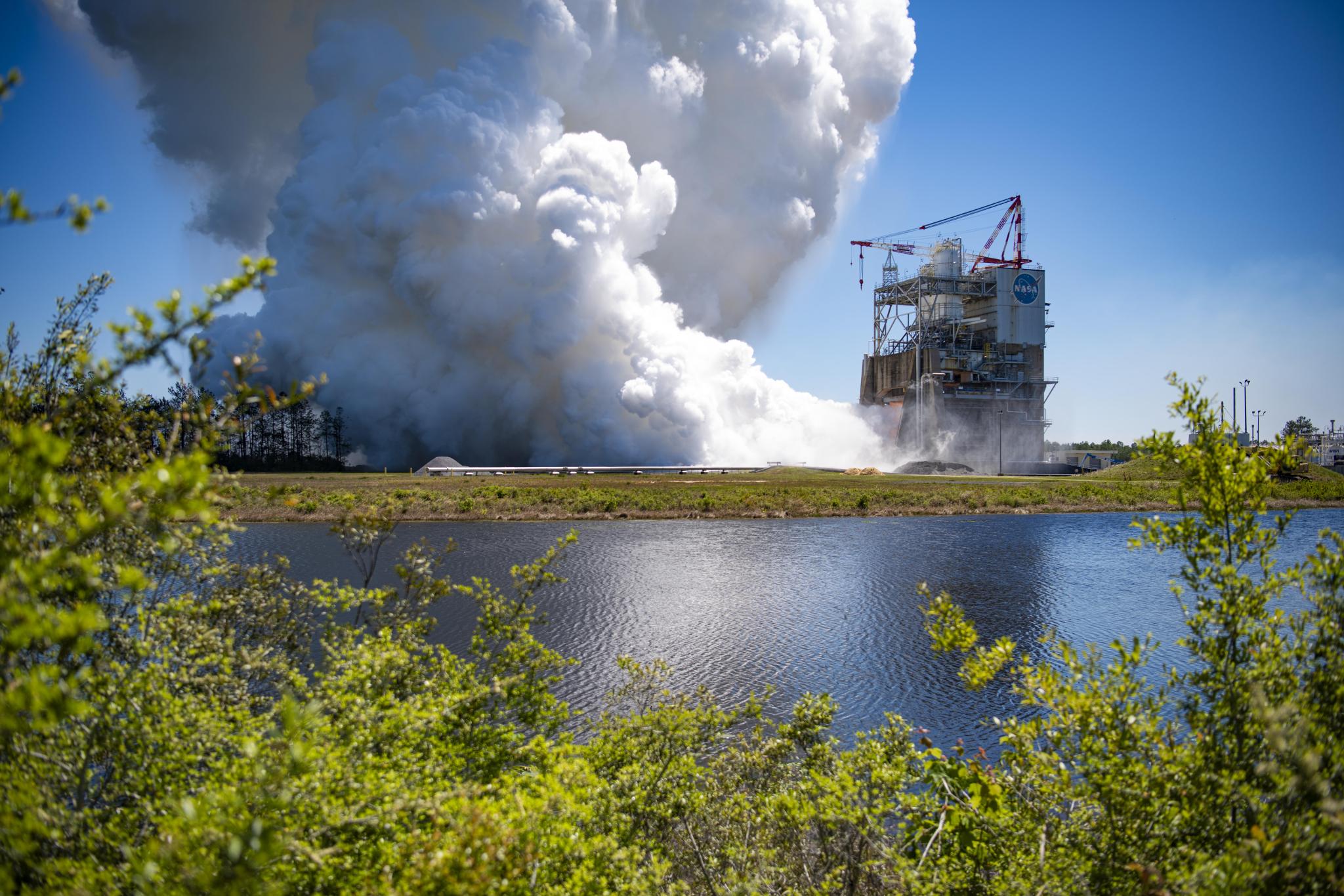
“The conclusion of the certification test series at NASA Stennis is just the beginning for the next generation of RS-25 engines that will help power human spaceflight for Artemis,” said Johnny Heflin, SLS liquid engines manager. “The newly produced engines on future SLS rockets will maintain the high reliability and safe flight operational legacy the RS-25 is known for while enabling more affordable high-performance engines for the next era of deep space exploration.”
Through Artemis, NASA will establish the foundation for long-term scientific exploration at the Moon; land the first woman, first person of color, and first international partner astronaut on the lunar surface; and prepare for human expeditions to Mars for the benefit of all.
Contributing to that effort, the NASA Stennis test team conducted a full-duration, 500-second hot fire to complete the 12-test series on developmental engine E0525, providing critical performance data for the final RS-25 design certification review. The April 3 hot fire completed a test series that began in October 2023.
RS-25 engines are evolved space shuttle main engines, upgraded with new components to produce the additional power needed to help launch NASA’s SLS rocket. The first four Artemis missions are using modified space shuttle main engines also tested at NASA Stennis. For each Artemis mission, four RS-25 engines, along with a pair of solid rocket boosters, power the SLS rocket, producing more than 8.8 million pounds of total combined thrust at liftoff.
“This was a critical test series, and credit goes to the entire test team for their dedication and unique skills that allowed us to meet the schedule and provide the needed performance data,” said Chip Ellis, project manager for RS-25 testing at NASA Stennis. “The tests conducted at NASA Stennis help ensure the safety of our astronauts and their future mission success. We are proud to be part of the Artemis mission.”
The E0525 developmental engine featured new key components – including a nozzle, hydraulic actuators, flex ducts, and turbopumps – that matched design features of those used during an initial certification test series completed at NASA Stennis last summer.
The two certification test series helped verify the new engine components meet all Artemis flight requirements moving forward. Aerojet Rocketdyne is using techniques such as 3D printing to produce new RS-25 engines more efficiently, while maintaining high performance and reliability. NASA has awarded the company contracts to provide 24 new engines, supporting SLS launches for Artemis V through Artemis IX.
“Successfully completing this rigorous test series is a testament to the outstanding work done by the team to design, implement and test this upgraded version of the RS-25 that reduces the cost by 30% from the space shuttle program,” said Mike Lauer, RS-25 program director at Aerojet Rocketdyne. “We tested the new RS-25 engines to the extreme limits of operation to ensure the engines can operate at a higher power level needed for SLS and complete the mission with margin.”
RS-25 Final Certification Test Series by the Numbers
All RS-25 engines are tested and proven flightworthy at NASA Stennis prior to use on Artemis missions. RS-25 tests at the center are conducted by a diverse team of operators from NASA, Aerojet Rocketdyne, and Syncom Space Services, prime contractor for site facilities and operations.
NASA’s Marshall Space Flight Center manages the SLS Program.
Agency Selects Companies to Advance Moon Mobility for Artemis Missions
NASA has selected Intuitive Machines, Lunar Outpost, and Venturi Astrolab to advance capabilities for a lunar terrain vehicle (LTV) that Artemis astronauts will use to travel around the lunar surface, conducting scientific research during the agency’s Artemis campaign at the Moon and preparing for human missions to Mars.
The awards leverage NASA’s expertise in developing and operating rovers to build commercial capabilities that support scientific discovery and long-term human exploration on the Moon. NASA intends to begin using the LTV for crewed operations during Artemis V.
“We look forward to the development of the Artemis generation lunar exploration vehicle to help us advance what we learn at the Moon,” said Vanessa Wyche, director of NASA’s Johnson Space Center. “This vehicle will greatly increase our astronauts’ ability to explore and conduct science on the lunar surface while also serving as a science platform between crewed missions.”
NASA will acquire the LTV as a service from industry. The indefinite-delivery/indefinite-quantity, milestone-based Lunar Terrain Vehicle Services contract with firm-fixed-price task orders has a combined maximum potential value of $4.6 billion for all awards.
Each provider will begin with a feasibility task order, which will be a year-long special study to develop a system that meets NASA’s requirements through the preliminary design maturity project phase. The agency will issue a subsequent request for task order proposal to eligible provider(s) for a demonstration mission to continue developing the LTV, deliver it to the surface of the Moon, and validate its performance and safety ahead of Artemis V. NASA anticipates making an award to only one provider for the demonstration. NASA will issue additional task orders to provide unpressurized rover capabilities for the agency’s moonwalking and scientific exploration needs through 2039.
The LTV will be able to handle the extreme conditions at the Moon’s South Pole and will feature advanced technologies for power management, autonomous driving, and state of the art communications and navigation systems. Crews will use the LTV to explore, transport scientific equipment, and collect samples of the lunar surface, much farther than they could on foot, enabling increased science returns.
Between Artemis missions, when crews are not on the Moon, the LTV will operate remotely to support NASA’s scientific objectives as needed. Outside those times, the provider will have the ability to use their LTV for commercial lunar surface activities unrelated to NASA missions.
“We will use the LTV to travel to locations we might not otherwise be able to reach on foot, increasing our ability to explore and make new scientific discoveries,” said Jacob Bleacher, chief exploration scientist in the Exploration Systems Development Mission Directorate at NASA Headquarters. “With the Artemis crewed missions, and during remote operations when there is not a crew on the surface, we are enabling science and discovery on the Moon year around.”
NASA provided technical requirements, capabilities, and safety standards needed for LTV development and operations, and the selected companies have agreed to meet the key agency requirements. The contract request for proposal required each provider to propose a solution to provide end-to-end services, including LTV development, delivery to the Moon, and execution of operations on the lunar surface.
Through Artemis, NASA will send astronauts – including the first woman, first person of color, and its first international partner astronaut – to explore the Moon for scientific discovery, technology evolution, economic benefits, and to build the foundation for crewed missions to Mars. Advanced rovers, along with the agency’s SLS (Space Launch System) rocket and Orion spacecraft, commercial human landing systems and next-generation spacesuits, and Gateway are NASA’s foundation for deep space exploration.
Hubble Peers at Pair of Closely Interacting Galaxies
An image from the NASA/ESA Hubble Space Telescope features Arp 72, a very selective galaxy group that only includes two galaxies interacting due to gravity: NGC 5996 (the large spiral galaxy) and NGC 5994 (its smaller companion, in the lower left of the image).
Both galaxies lie approximately 160 million light-years from Earth, and their cores are separated from each other by a distance of about 67,000 light-years. The distance between the galaxies at their closest points is even smaller, closer to 40,000 light-years.
While this might sound vast, in galactic separation terms it is quite close. For comparison, the distance between the Milky Way and its nearest independent galactic neighbor Andromeda is around 2.5 million light-years. Alternatively, the distance between the Milky Way and its largest and brightest satellite galaxy, the Large Magellanic Cloud (satellite galaxies orbit around another galaxy), is about 162,000 light-years.
Given this and the fact that NGC 5996 is comparable in size to the Milky Way, it is not surprising that NGC 5996 and NGC 5994 – separated by only about 40,000 light-years – are interacting with one another. In fact, the interaction likely distorted NGC 5996’s spiral shape. It also prompted the formation of the very long and faint tail of stars and gas curving away from NGC 5996, up to the top right of the image. This “tidal tail” is a common phenomenon that appears when galaxies closely interact and is visible in other Hubble images of interacting galaxies.
























